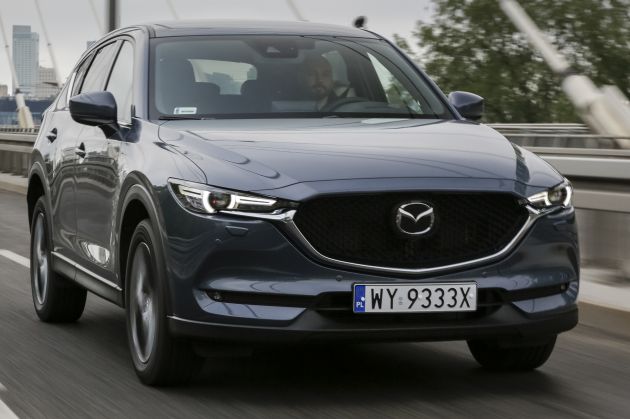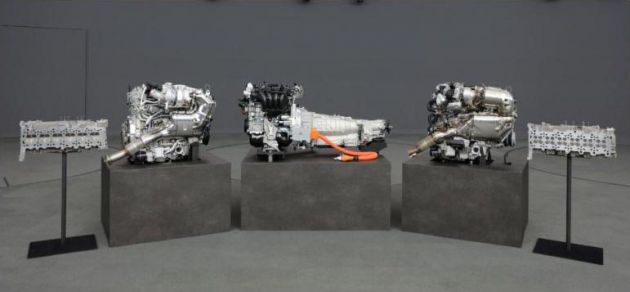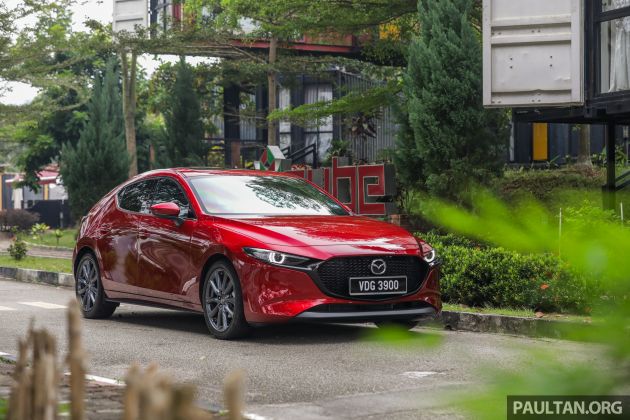It’s no secret that Mazda is having a tough time at the moment. Its move upmarket has backfired, and sales have been sliding even before the coronavirus pandemic. Faced with this grim reality, Hiroshima is moving quickly to try and reverse its fortunes – but inexplicably, it’s doing so by making an even more concerted move towards the premium space.
According to Nikkei Asia, Mazda is rolling out two product groups, “small” and “large”, based on the size of the chassis. It’s the latter that the report is focusing on, which will include SUVs with rear-wheel drive and straight-six engines for enthusiast appeal – the company’s “secret weapon”, the publication said.
Production of the large models will start in early 2022 at the Hofu plant in Yamaguchi, claimed Mazda-affiliated parts makers in Hiroshima. The six-cylinder engines will have a displacement of 3.0 or 3.3 litres and come in petrol, diesel and Skyactiv-X flavours, with mild hybrid technology.
The new SUVs are set to replace the popular CX-5 and CX-8, but because those two cars are still competitive, they will likely coexist with the new models. Multiple suppliers are gearing up to build around 300,000 units in the fiscal year ending March 2025, just under 20% of Mazda’s global sales.
Increased specifications of the large models mean that they will probably be much more expensive than the current cars, but the Mazda is trying to shave costs as much as possible to make sure sales aren’t affected. “We’re trying to hold down costs by transferring orders to foreign parts makers,” said a company official.
Meanwhile, an executive at one of its suppliers said, “The price is getting higher than Mazda’s initial assumption, and we’re continuing to make adjustments like lowering the specifications of parts.”
The company will need to walk a fine line between pushing upmarket and avoiding alienating its existing customer base. “Pricing will change depending on whether the focus is on sales volume or improving branding,” said Masatoshi Nishimoto, a manager at information provider IHS Markit. “If they’re aiming for volume, they should offer more grades of a single model to broaden the price range.”
Mazda is also banking on the rotary engine as a range extender for its electric vehicles, with the MX-30 being the first to get it in 2022; the company wants to increase range from a dismal 200 km to over 400 km. The crossover has been selling far below expectations in Japan, where it is currently only available as a mild hybrid, due to the cumbersome “freestyle” suicide doors.
“The inclusion of the rotary engine will be a big selling point that will attract Mazda fans,” said Mitsubishi UFJ Morgan Stanley Securities senior analyst Koichi Sugimoto. “If they can strike a balance between cruising range and pricing, we can expect sustained sales growth.” The MX-30 and other battery and rotary-powered EVs will be classified as small models, which will also include mild hybrids.
“We are also strengthening our electrification technology for large products, so we want to address global warming with those two groups,” said Mazda president Akira Marumoto. Those large cars will be offered with plug-in hybrid technology, helping to lower average emissions and meet tightening regulations.
But Mazda has been down this road before, investing in more expensive models and new engines that have yet to pay the expected dividends. Even before the pandemic, the company suffered from sluggish sales of the new Mazda 3, particularly models fitted with the newfangled Skyactiv-X powertrain – although strong sales of the related CX-30 crossover have ameliorated the situation somewhat.
Mazda has also been affected by strict environmental regulations in Europe, which imposes fines for excess carbon dioxide emissions. To reduce the fines it paid last year, it had to adjust its sales mix, raising prices of the CX-5 – which produces relatively high emissions – by around four per cent.
All this has had an effect on global sales, which improved from a low in April but still lagged behind 2019’s numbers despite a rebounding industry. Mazda posted 10% lower sales in September, while its October figure was three per cent lower than the previous year’s.
The company retained its full-year forecast despite competitors Toyota and Honda raising theirs in their November interim financial results. In all, Mazda is expected global sales for the fiscal year ending March 2021 to decline by eight per cent to 1.3 million units, with a final loss of 90 billion yen (RM3.5 billion).
Research Mazda Cars at
Related Cars for Sale on
Source: Read Full Article



























